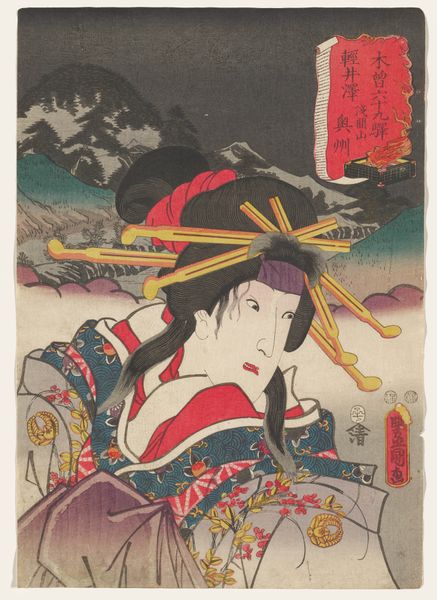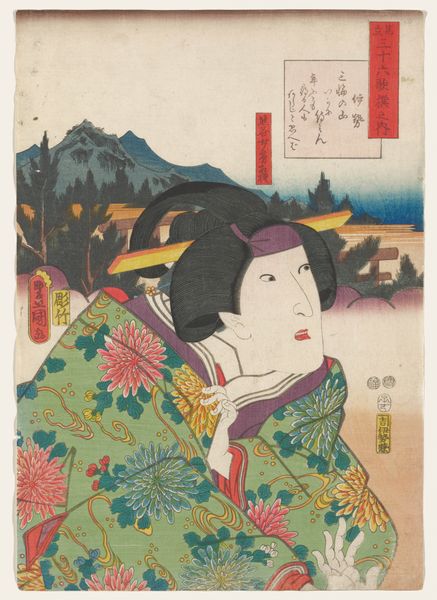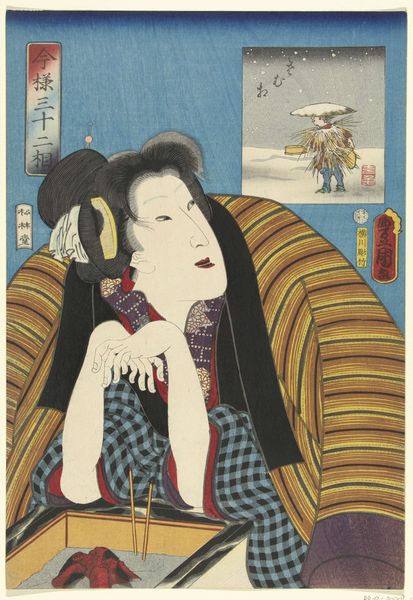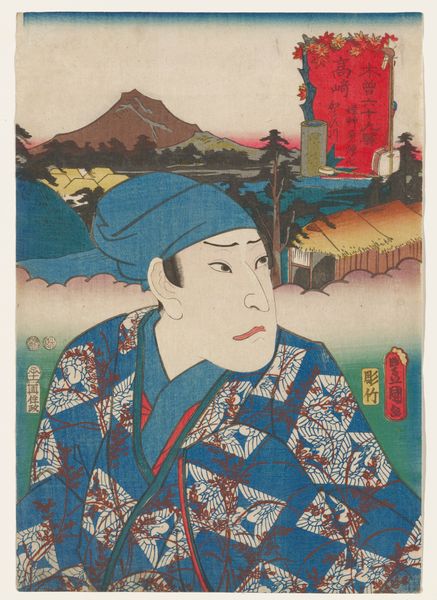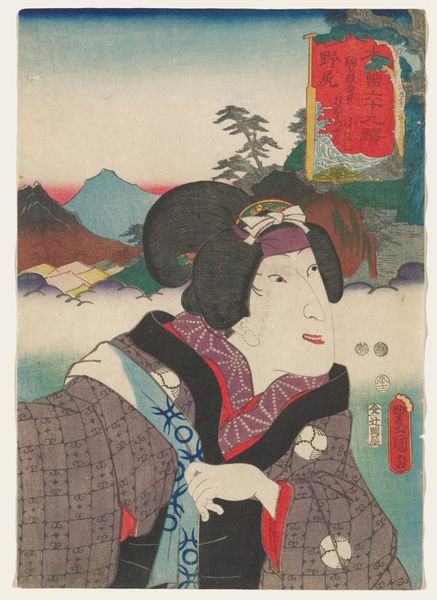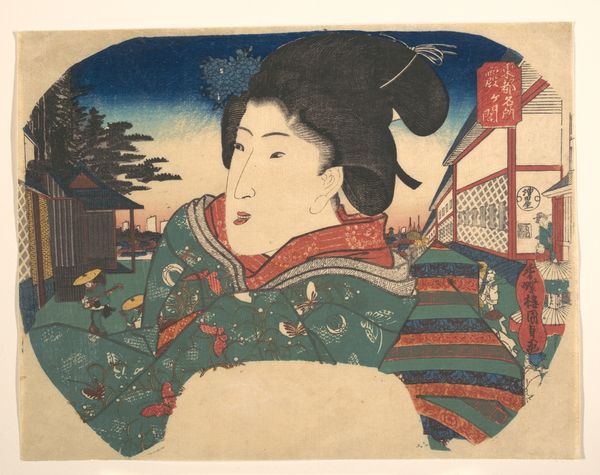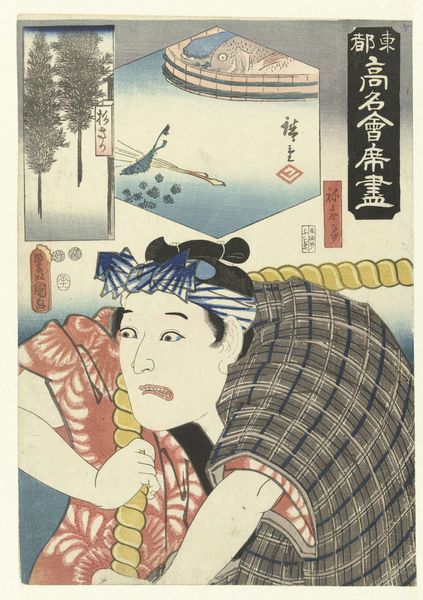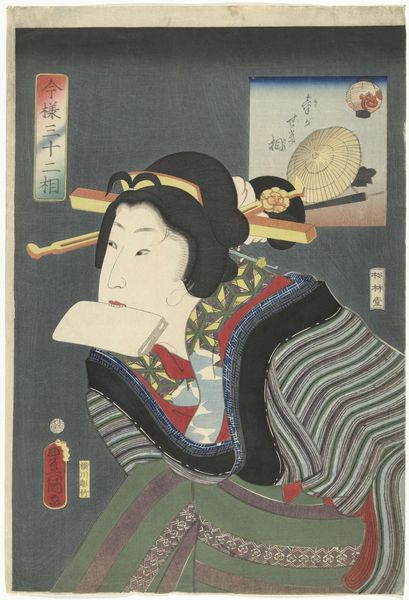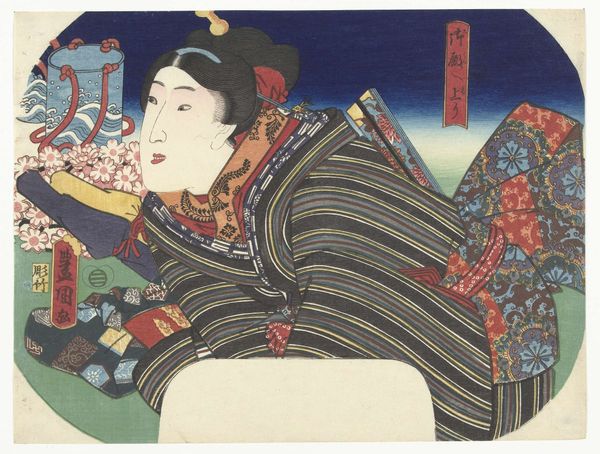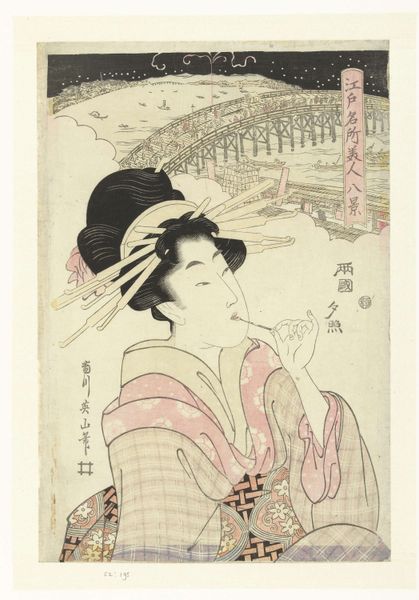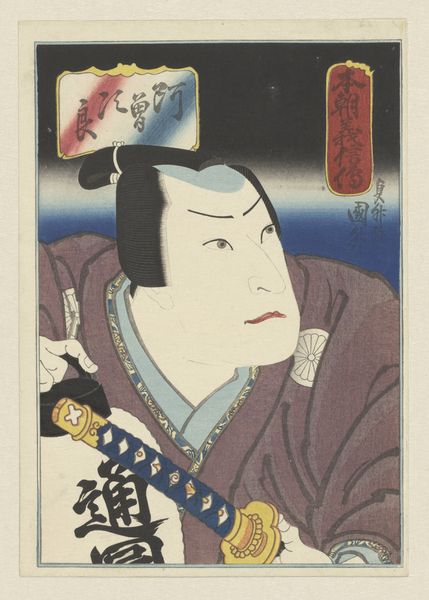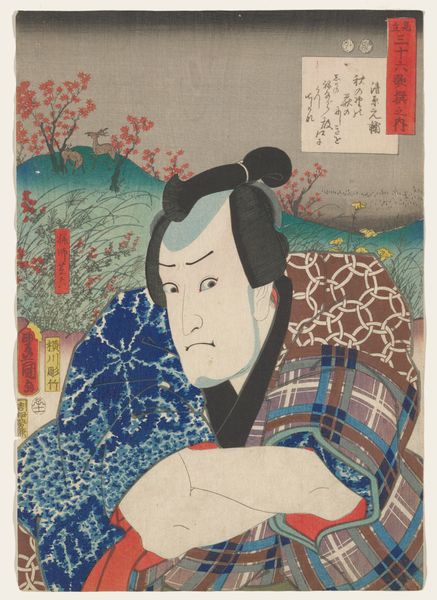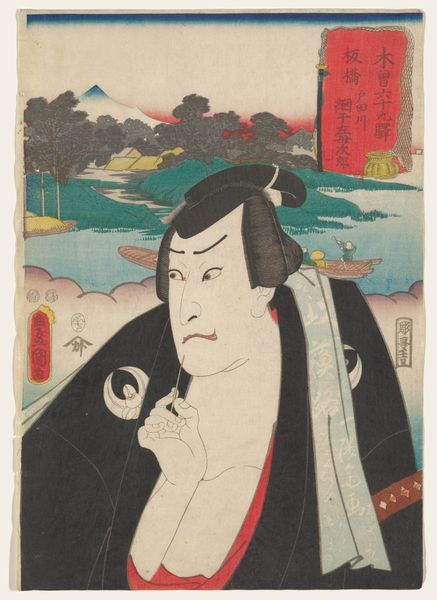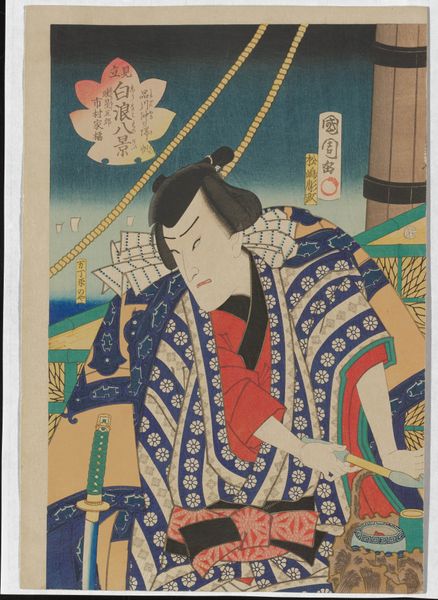
The Historical Site of the Pontoon Bridge of Sano at Kuragano Styation- (Actor Iwai Tojaku I as) Dote no Oroku Possibly 1852
0:00
0:00
print, ink
#
portrait
# print
#
landscape
#
ukiyo-e
#
ink
Dimensions: 14 × 9 3/4 in. (35.5 × 24.77 cm) (image, sheet, vertical ōban)
Copyright: Public Domain
Utagawa Kunisada created this woodblock print of actor Iwai Tojaku I as Dote no Oroku in nineteenth-century Japan. Prints like this one offered an affordable connection to the glamorous world of Kabuki theater. Here, the actor is seen out of costume, yet his identity is confirmed through textual clues and his recognizable features. Oroku was a character in a play called Imoseyama Onna Teikin, first performed in 1771, a story of tragic lovers divided by family and social status, set in seventh-century Japan. Kunisada draws on established visual codes: the snowy landscape signals the season, and the red cartouche identifies the actor. The combination of familiar signifiers and fashionable design made such prints popular commodities for a broad audience within a rapidly expanding urban culture. To understand these prints, we look at theater programs, costume books, and other ephemera. The historian's work pieces together the social and institutional contexts that shaped artistic production and reception.
